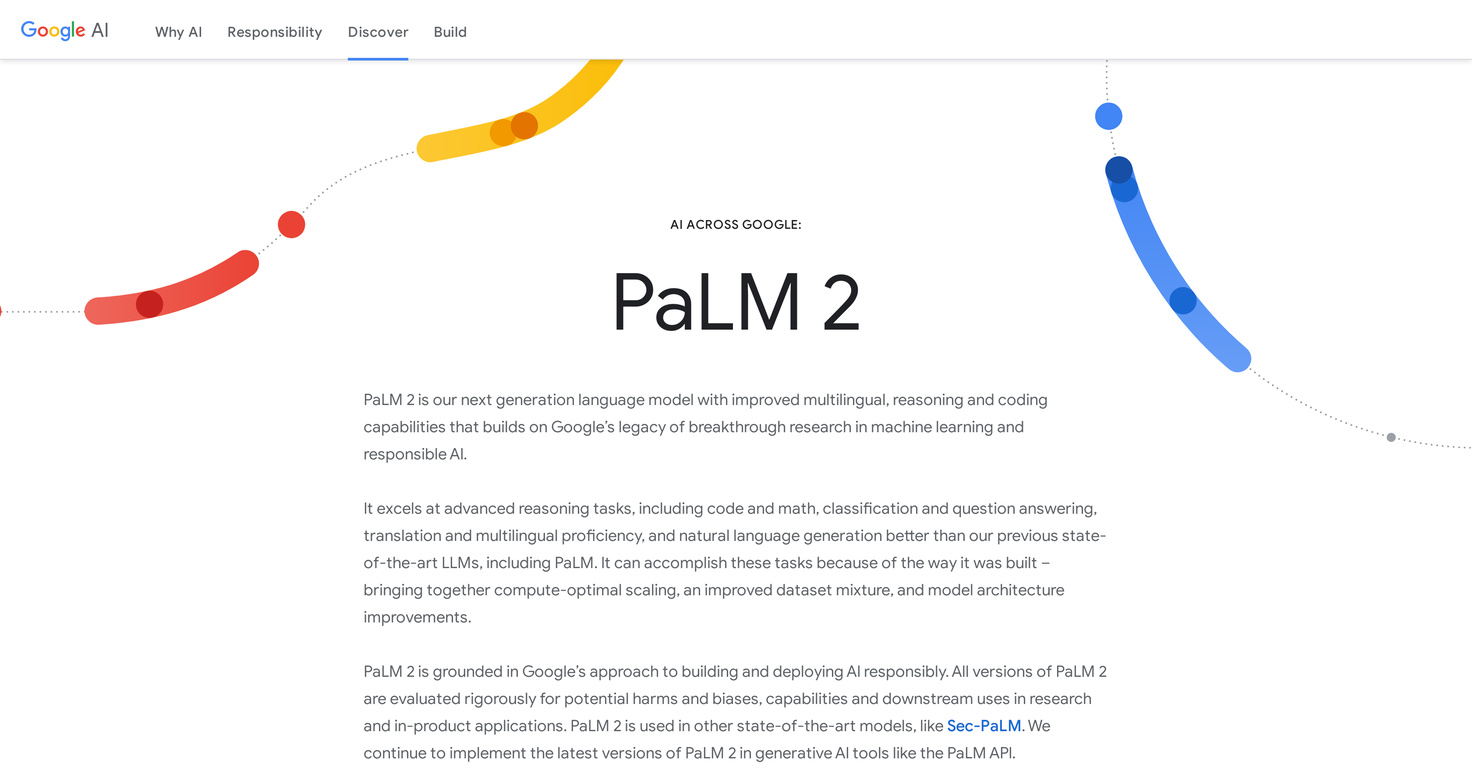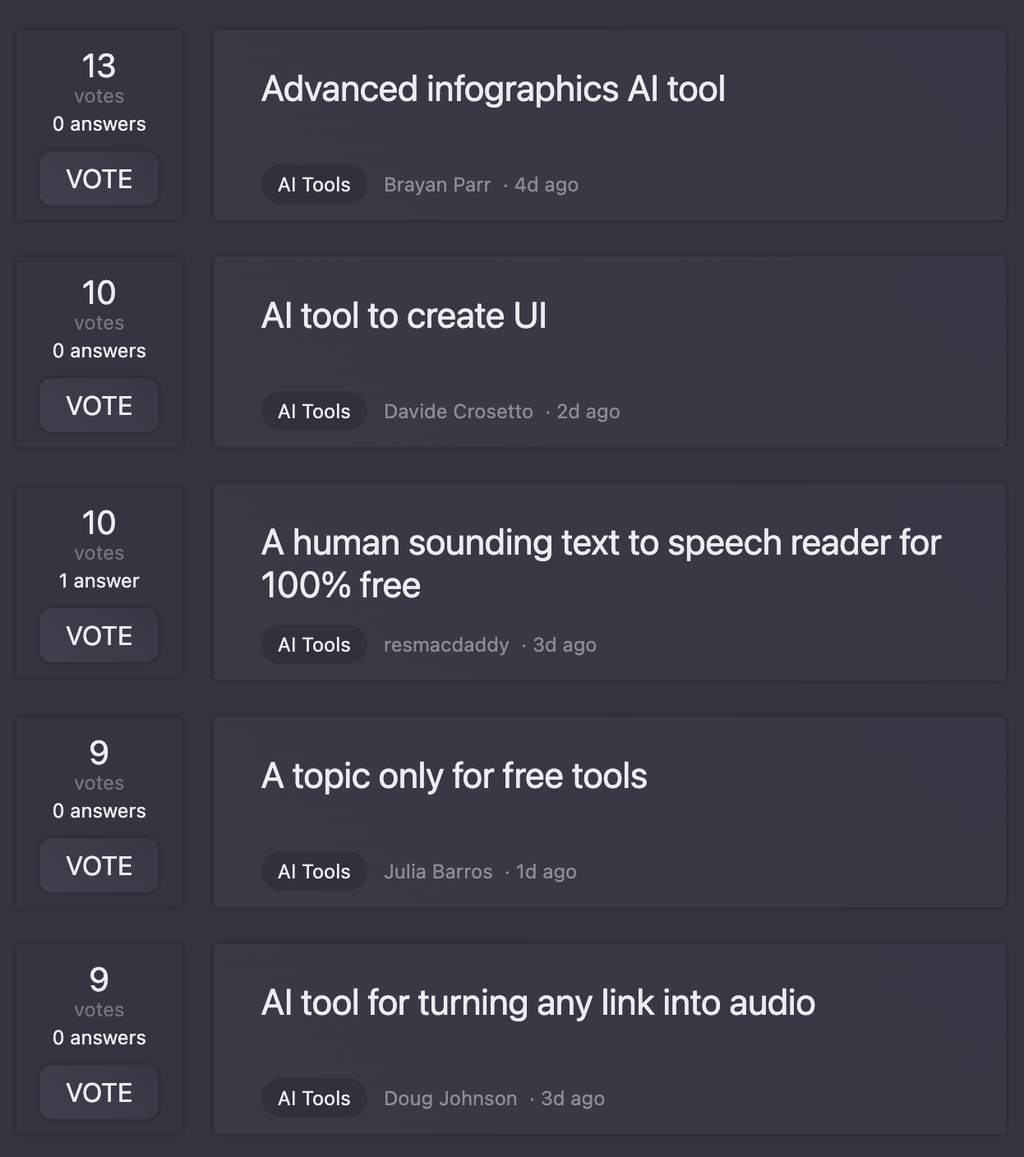What is PaLM 2?
PaLM 2 is the second iteration of Google's large language model. It excels in advanced reasoning tasks including coding, math, classification, question answering, and natural language generation. It also shows improvement in multilingual proficiency over its predecessor. PaLM 2 has been rigorously assessed to determine potential harms and biases, as well as its downstream uses in research and in-product applications.
What advancements does PaLM 2 represent over the original PaLM model?
PaLM 2 brings three key advancements over the original PaLM. It uses compute-optimal scaling to balance model size with training dataset size, making it more efficient and performance-driven. It offers a more diverse pre-training dataset mixture, including a wide variety of human and programming languages, mathematical equations, scientific papers, and web pages. Furthermore, it has updated model architecture and objectives, which have contributed to its improved performance and capabilities.
What kind of tasks can PaLM 2 handle?
PaLM 2 can handle a range of advanced tasks. These include reasoning tasks, where it can decompose a complex task into simpler sub-tasks, and natural language understanding, where it can understand the nuances of human language, including idioms and riddles. In addition, it is proficient in multilingual translation and can generate code in popular programming languages as well as specialized languages.
Can PaLM 2 be used for coding in specific programming languages?
Yes, PaLM 2 can indeed be used for coding in specific programming languages. It has been pre-trained on a large amount of web page data, source code, and other datasets to be proficient in popular programming languages like Python and JavaScript, as well as more specialized coding languages like Prolog, Fortran, and Verilog.
How does PaLM 2's understanding of human language nuances work?
PaLM 2's understanding of human language nuances comes from its extensive pre-training and model architecture improvements. This has enabled it to understand riddles and idioms, which requires an understanding of ambiguous and figurative meanings of words, rather than their literal meanings.
What is the role of PaLM 2 in Google's Bard tool?
In Google's Bard tool, a creative writing and productivity aid, PaLM 2 contributes to generative AI functionality. While specific roles are not detailed, it can be inferred that Bard benefits from PaLM 2's advanced reasoning capabilities, natural language generation, and understanding of language nuances.
What are some ways PaLM 2 has improved on multilingual capabilities?
PaLM 2 has improved multilingual capabilities through expanded pre-training on parallel multilingual text. The pre-training dataset mixture is more diverse and includes a larger corpus of different languages when compared to its predecessor. Consequently, it performs better in multilingual tasks.
How does compute-optimal scaling improve PaLM 2's performance?
Compute-optimal scaling in PaLM 2 advances its performance by scaling the model size and training dataset size in proportion to each other. This strategy makes PaLM 2 smaller and more efficient than its predecessor, with better overall performance, faster inference, fewer parameters to serve, and a lower serving cost.
What improvements does PaLM 2 offer in terms of dataset mixture?
PaLM 2 offers improvements in terms of dataset mixture by incorporating a more diverse and multilingual pre-training mixture. Unlike its predecessor which used mostly English-only text for pre-training, PaLM 2 includes hundreds of human and programming languages, mathematical equations, scientific papers, and web pages.
What changes have been made to PaLM 2's model architecture and objectives?
PaLM 2 introduces an updated model architecture and objective. It was trained on a variety of different tasks, which helps the model learn different aspects of language. The specifics of the changes are not detailed, but they have resulted in improved performance and versatility compared to the previous generation.
How was PaLM 2 evaluated for potential harms and biases?
PaLM 2 was evaluated rigorously for potential harm and biases in line with Google's Responsible AI Practices. The evaluation considered a range of potential downstream uses, including dialog, classification, translation, and question-answering scenarios. New evaluations were developed for measuring potential harms in generative question-answering settings and dialog settings related to toxic language harms and social bias related to identity terms.
Can PaLM 2 generate specialized code in languages other than Python and JavaScript?
Yes, besides Python and JavaScript, PaLM 2 is capable of generating specialized code in languages such as Prolog, Fortran, and Verilog. This is due to diverse pre-training that included extensive source code among other datasets.
What kind of improvements does PaLM 2 bring to generative AI features?
For generative AI features, PaLM 2 brings a host of improvements, including better performance in advanced reasoning tasks, proficiency in more programming languages, and an improved understanding of language nuances. These enhancements lead to better generative AI applications using tools like the PaLM API.
How does PaLM 2 contribute to the PaLM API?
PaLM 2 contributes to the PaLM API by being the underlying large language model that powers it. Its enhancements, such as advanced reasoning, multilingual translation, and coding capabilities, make the API more versatile and powerful for developing generative AI applications.
What makes PaLM 2 more efficient and cost-effective?
PaLM 2's use of compute-optimal scaling increases its efficiency and makes it more cost-effective. By scaling the model size and the training dataset size proportionally, PaLM 2 has fewer parameters to serve, faster inference times, and lower serving costs. It achieves better overall performance whilst being smaller than its predecessor.
How has PaLM 2 improved its translation capabilities?
PaLM 2 has improved upon its translation capabilities by including more languages in its pre-training data and achieving better results on multilingual benchmarks than the previous model. This improvement is significant enough to outperform Google Translate in languages like Portuguese and Chinese.
Which Google features or products benefit from the advancements of PaLM 2?
Several Google features and products benefit from the advancements of PaLM 2. These include Bard, a tool for creative writing, the PaLM API for developing generative AI applications, and Google Workspace features like email summarization in Gmail and brainstorming and rewriting in Docs.
What are some prominent examples of advanced reasoning tasks PaLM 2 can handle?
One prominent example of an advanced reasoning task that PaLM 2 can handle is decomposing a complex task into simpler sub-tasks. It can also understand riddles and idioms, which require understanding ambiguous and figurative meaning of words, rather than their literal meanings.
How does PaLM 2 handle multilingual translation?
PaLM 2 handles multilingual translation by making use of its extensive pre-training on parallel multilingual text. It was trained on a much larger corpus of different languages than its predecessor, allowing it to excel at multilingual tasks.
Can PaLM 2 understand and work with idioms and riddles?
Yes, PaLM 2 can understand and work with idioms and riddles. Its enhanced natural language understanding capabilities allow it to comprehend ambiguous and figurative meanings of words, which are often crucial to understanding idioms and riddles.












